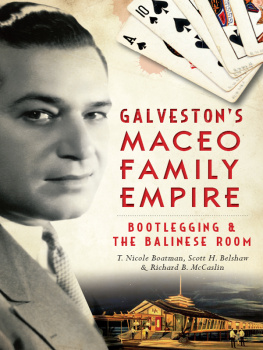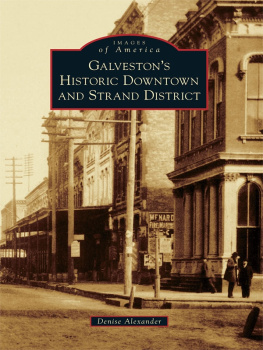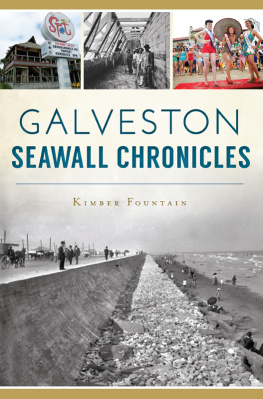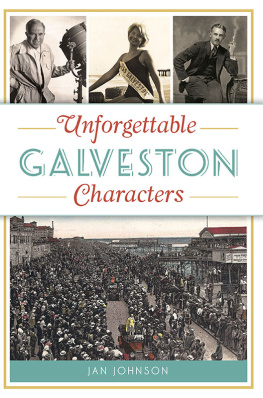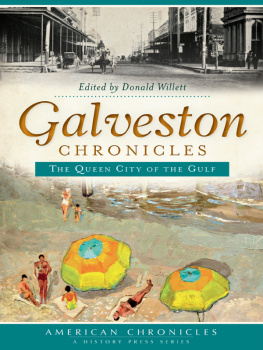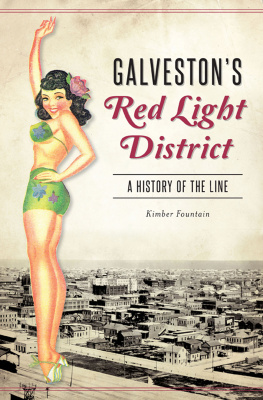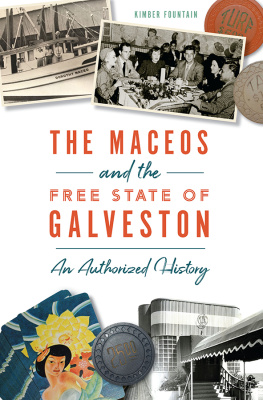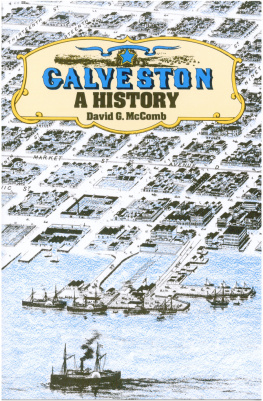
Published by The History Press
Charleston, SC 29403
www.historypress.net
Copyright 2014 by T. Nicole Boatman, Scott H. Belshaw and Richard B. McCaslin
All rights reserved
First published 2014
e-book edition 2014
ISBN 978.1.62585.331.8
Library of Congress Control Number: 2014953188
print edition ISBN 978.1.62619.753.4
Notice: The information in this book is true and complete to the best of our knowledge. It is offered without guarantee on the part of the author or The History Press. The author and The History Press disclaim all liability in connection with the use of this book.
All rights reserved. No part of this book may be reproduced or transmitted in any form whatsoever without prior written permission from the publisher except in the case of brief quotations embodied in critical articles and reviews.
CONTENTS
ACKNOWLEDGEMENTS
I want to acknowledge the love and support of my family and friends. Specifically, Mom and Dad, you guys have always given me the necessary strength and confidence for school, as well as for this particular project. You guys have reassuringly coached me through the many obstacles with which I have been faced. Also, Granny and Papa, you guys believed in me more than I believed in myself sometimes, and a special thanks for your help when I lived like a vagabond, jumping between classes and work. Your hearty breakfasts got me through many long days. Finally, to the ladies in my life who have listened to me moan and groan and reminded me why this work was so important to finish: Abi, Alison, Ashley and Sarah Bear. I wouldnt have made it through these past two years without your encouragement and our frequent nights at Cheers.
I would also like to express my very great appreciation to Dr. Chad Trulson for his assistance on this project. Before the birth of this project, you graded me harder than any professor, but it made me a better writer. I acknowledge the time you put into this project during its early stages. Also, I am grateful for the suggestions and constructive criticism you provided, which ultimately made it a stronger thesis. In addition, I would like to thank Rosenberg Library, Moore Memorial Public Library, University of Houstons M.D. Anderson Library and University of Texas Dolph Briscoe Center for American History for your assistance in my research efforts. Thank you Amanda Belshaw for your help with the photos. Lastly, and most importantly, I would like to thank Dr. Scott Belshaw and Dr. Richard McCaslin, who collaborated with me on each step of this project. It has been great working with you guys!
NB
I want to acknowledge the assistance of my wife, Amanda, the love of my life. Your assistance on this project was greatly appreciated. I also want to thank my father-in-law, Warren Burl Leeson; God rest his soul. When I joined the family, I heard his great stories regarding the bootlegging families and the mafia in Galveston. That inspired me to dig deeper into the history of Galveston. I enjoyed hearing his stories of going to the Balinese Room in the 1940s. Thanks, Dad. I want to thank all my Clear Lake peeps for the encouragement on this project. Having grown up on the Texas Gulf Coast, I was exposed to its rich history and fun people. Go Falcons. I want to thank my kids for striving to be the best at everything they do. They are the true meaning of what love is.
SHB
I simply want to thank my colleagues Scott Belshaw and Nicole Boatman for including me in this project. It is one of the great joys in academia that we get the opportunity to learn new things all the time. This project is a perfect example. And I of course want to thank my wife, Jana McCaslin, for allowing me to continue playing in this sandbox.
RBM
INTRODUCTION
Texas history is fascinating because of the many kinds of people who have settled in the Lone Star State. No matter what variety of folks you encounter elsewhere in the United States, it seems you also find them living somewhere in Texas. Texans, of course, celebrate their diverse ethnic heritage in festivals and other events that commemorate the immigrants who arrived from six of the seven continents on Earth. If a substantial number of people had ever emigrated from Antarctica, Texans are certain the best of them would have landed in their state, too.
But memory, especially public memory, is selective. Through time, and the hard work of many opinion shapers of all sorts, Texans have embraced popular images that reflect what most of them think the people of their state are really like. Arguably, the cowboy and the oilman are at the top of the list, followed by everyone from cowgirls to outlaws. All of these are also accepted by the outside world as the faces of Texas. But the fact that there were gangsters in the Lone Star State seems to be almost completely overlooked in published histories. And Texas became the home of not just any mafioso, but real Sicilian-born mobsters who built an empire in the island city of Galveston during the first half of the twentieth century.
Salvatore Sam Maceo and Rosario Rose Maceo are an integral part of the Texas story. They came to America looking for opportunity, and like many other immigrants, they found it in Texas. Unfortunately for their public legacy, they made a fortune in illicit enterprises such as bootlegging, gambling and prostitution. Drawing heavily on the example of the criminal organizations they encountered in their native Sicily, they carefully cultivated the goodwill of their neighbors in Galveston by sharing the profits of their operations, and in turn, most local residents generally condoned their activities. Certainly the Maceo brothers were no saints, but it can be argued that they played a crucial role in bringing prosperity to Galveston after it had endured a century of turmoil and tragedy.
This book on the Island Empire of the Maceos thus brings attention to an overlooked piece of Texas history, as well as the story of the United States. It is important to understand all aspects of the impact of European immigration on both the state and the nation and to understand that the positive and negative impacts were not just confined to one region. The insights into organized crime in Galveston that are offered in this study of the Maceos should prove useful to scholars seeking to understand its development in other cities. It is certainly intriguing to discover the role played by the brothers in the rise of Las Vegas, as well as their familys continuing influence there. Perhaps the irony of how Las Vegas prospered through the same activities for which the Maceos were prosecuted will not escape the notice of the careful reader.
RICHARD B. McCASLIN, PHD
University of North Texas
ISLAND EMPIRE
GALVESTON AND THE MACEOS
Since the beginning of the 1900s, organized crime families have played a significant role in American society. However, organized crime groups are not a modern invention, nor are they unique to the United States. Such groups have been around for centuries, and they can be found throughout multiple cultural groups. What most Americans consider to be organized crime is synonymous with the term mafia. It has been argued that the terms mafia and La Cosa Nostra did not come into use until the middle of the twentieth century. Nevertheless, while these terms may not have been in use prior to that point in time, the criminal activities that are associated with these types of groups had already proven to be prevalent in many different locations.
The American mafia can be traced back to the southern Italian island of Sicily. In general, it began as a response to the oppression and legal insecurities perpetuated by outside governments in southern Italy. There were various foreign leaders who took control of the area prior to the twentieth century. Typically, these foreign rulers failed to meet the needs of Sicilians. As a result, landowners reached out to criminal groups, who promised to protect their land and assets. Over time, these groups received compensation from the elite groups for the services they provided. They also received support from local churches because even the religious leaders recognized the good these groups brought to their communities.
Next page
